No Man’s Land, and the Question of Paying to Win
by NorseGamer, HSM Editor-in-Chief
“Freemium,” which is sweeping the gaming industry, is a relatively new economic model for video games — and everyone involved in it is still trying to figure out how to make it work.
Classic video gaming, whether encased in an arcade cabinet, computer or game console, is fairly straightforward: you come up with a concept. A whole bunch of people create it and distribute it. If it sells, more games like it come out. The consumer pays to play, up front, either through rental or purchase.
Freemium, on the other hand, has a very different model: sink a whole bunch of money into a game, let people play it for free, and then figure out different methods of generating incremental revenue via enhancement microtransactions. The wager is that by making the barrier to entry effectively zero, you gain much greater audience exposure — and thus, even though a low percentage of people spend money, it’s more people than the game might’ve reached otherwise (which creates greater brand recognition for future products).
 On a personal level, I don’t like freemium. I don’t. It goes against every bit of luxury sales and marketing psychology I’ve ever been trained in or used in the real world. I can see the advantages in this business model, but if done wrong it can make the purveyor look desperate for business — and it inherently lends itself to overt nickel-and-diming. There’s no such thing as a free lunch, and when I play a freemium game, it’s always in the back of my mind as to how much money I have to spend in order to get the full and proper experience. Just charge me the money I should be charged up front and then leave me alone to play the bloody game.
On a personal level, I don’t like freemium. I don’t. It goes against every bit of luxury sales and marketing psychology I’ve ever been trained in or used in the real world. I can see the advantages in this business model, but if done wrong it can make the purveyor look desperate for business — and it inherently lends itself to overt nickel-and-diming. There’s no such thing as a free lunch, and when I play a freemium game, it’s always in the back of my mind as to how much money I have to spend in order to get the full and proper experience. Just charge me the money I should be charged up front and then leave me alone to play the bloody game.
Ah, but we’re in an era of hypersensitivity to pricing, aren’t we? Airlines, ever since deregulation, have gotten incredibly adept at advertising stupidly low fares, and then tacking on incremental service fees for everydamnthing imaginable. Automakers have perfected the art of selling you a chassis and then showing you enough options to make you go crosseyed. The music industry had no choice but to adapt something very similar to freemium. And resorts have gotten in on the act, offering steep room discounts off artificially inflated rates and then jacking the ADR right back up via discretionary service fees. We live in an age where the actual price of anything even remotely beyond an absolute necessity is disguised.
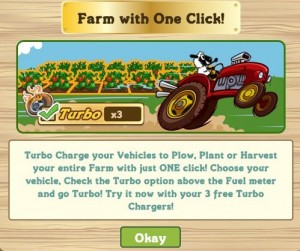 And video games? Once Zynga surpassed EA’s market value with their ridiculously simple games reliant upon a freemium formula of massive audience exposure and whale economies — particularly at a time when traditional sales metrics throughout the industry are in decline and cheap mobile games fill the working adult’s need for distractions during many of life’s tedious daily moments — it was fairly obvious to see that everyone on the planet, including your cat, was going to try to get in on the same basic approach.
And video games? Once Zynga surpassed EA’s market value with their ridiculously simple games reliant upon a freemium formula of massive audience exposure and whale economies — particularly at a time when traditional sales metrics throughout the industry are in decline and cheap mobile games fill the working adult’s need for distractions during many of life’s tedious daily moments — it was fairly obvious to see that everyone on the planet, including your cat, was going to try to get in on the same basic approach.
Eventually, there will be a backlash to freemium social gaming, similar to the 1983 crash. As Richard Garriott pointed out in Issue #10 of HSM, the door is already closing on this third age of gaming (and he himself is just now getting into it). People will eventually become sick of being bled to death, game companies will realize that masses of asses do not guarantee piles of revenue, and a smart developer will realize the power of selling something as an exclusive pay-to-access commodity or service, utilizing marketing techniques already well known to any luxury brand.
But we’re not there yet.
Instead, we’re in PlayStation Home. A free metaverse with no direct purpose which serves as a freemium gaming platform. And after this many years of data on the very first console-based social network for gamers, it’s safe to say that a Home game has a three basic templates to follow for maximum audience acceptance:
1. Limited-use commodities which can be purchased for low amounts of money (Sodium2 rocket boosters, Novus Prime nebulon boosters, Casino chips, Midway tickets, etc.);
2. Higher-priced commodities which confer permanent upgrades (SodiumOne plasma emitters, Novus Prime spaceships, etc.)
3. Restrictions to available content (SodiumOne levels), made available for a buy-in price.
Obviously, some games perform better than others in Home. No one’s going to argue with the revenues generated by Novus Prime, the Casino, the Midway trio, or the brace of Sodium games. But there have been failures in Home as well, such as Conspiracy or Dragon’s Green. And it cannot be overstated that a game’s freemium model is absolutely critical to its success. Cutthroats, as we’ve written about in Home previously, has the potential to be one of Home’s best games — but it’s undermined by a freemium pricing structure that effectively kills its replayability.
What’s interesting is how these various exceptions to the rule for Home freemium gaming help reinforce The Way Things Should Be. But does everything have to be that way?
Games in Home can be worth fifty dollars — if they’re done right.
This brings us neatly to VEEMEE’s No Man’s Land. Those of you who read HSM’s initial coverage of No Man’s Land will recall that I favorably reviewed this game, and I stand by that assessment. I know that might surprise you, considering how critically unpopular its freemium pricing structure is (particularly since the game’s cover-based control scheme takes some getting used to), and if you recall how I savaged Cutthroats, you know I’m not exactly shy about letting rip with the keyboard when I see an obviously flawed game.
Thing is, though…I think VEEMEE might actually be very clever with what they’re doing, although there is room for improvement. Let’s dive into the most common complaint with the freemium commerce model being used by No Man’s Land:
There is no method of earning, in game, any sort of upgrade. You must pay to win.
There’s some validity to this. No Man’s Land has no method of earning power-ups. You can play the game all you want, but unless you fork over some cash, you’re at a significant disadvantage. The problem here is twofold: default-loadout players are at such a huge disadvantage that it may actually drive down user retention levels (they can’t survive long enough to feel the rush of victory and want to play the game further), and as there is absolutely no method of earning anything via achievement or random event in game, it feels like more of a blatant in-your-face grab for money, which may turn people off. It doesn’t seem “fair.”
Now, personally, I don’t mind all this. No Man’s Land is a survivalism game, and logically you would be thrown into the mix with a wide array of loadouts; real battlefields are rarely balanced fairly. In a free-to-play game, the right of way should go to someone who has spent some money. And, frankly, it doesn’t take that much to even things up; for nine bucks and change, you can turn yourself into a tank. Considering what it takes to gain such a massive tactical advantage in other freemium Home games, that’s eminently reasonable. I would take issue with this if the power-ups were temporary — my biggest gripe with Cutthroats is that its pricing is egregiously high for power-ups you don’t get to keep — but No Man’s Land’s upgrades are permanent. And considering how most Home games rely on whale economies, blatantly going for the whale isn’t necessarily a bad idea. Home games have about two to three weeks of Sony spotlight before promotional attention goes elsewhere, which means it’s absolutely critical for a game to capitalize on that short window of time.
Ever since the Hub stopped displaying a No Man’s Land portal in the middle of it, I’ve noticed less traffic at the Drydock. Coupled with the inevitable decline in visitors after the initial curiosity has played itself out, and I think a clearer picture of the game’s committed user base is starting to emerge. In the type of environment Sony has created, where there’s always a new attraction right around the corner, developers have no choice but to drive impulse-purchase behavior. This isn’t 2009, where the only real game in town was SodiumOne; this is a much faster Home than ever before.
And what better method of driving impulse purchases than player-versus-player competition?

So…on a game console, *fashion* is worth hundreds of dollars in cumulative expenditures, but *games* aren’t?
Shooter enthusiasts are, in general, rather competitive people. They may not spend fifty dollars to beat a Home game, but they will spend that kind of money to have status and superiority over one another. It cracked me up to no end when I saw a fashionista on the Sony forum self-righteously declare that “no Home game is worth fifty dollars.” This from someone who spends vast sums of money showing off outfits from other regions in order to build some semblance of internet status. Good god, the myopic hypocrisy.
And it illustrates a valuable point: something is worth a premium when it emotionally matters to you. This is where behavioral economics steps in. Glitchers are fond of bragging about how much money they spent on virtual furniture, because to them, it was worth it. Fashionistas are the same with their clothing. And gamers are the same with their games. Much as I dislike Sony’s crass attempt at capitalizing on this with x7, the Mansion and Exclusives, what I dislike was the stupidity of the marketing — it had about as much subtlety as a crashing helicopter — not the strategy itself. It’s a perfect reflection of a freemium whale economy in which people are motivated to buy status.
Developers aren’t the ones who created this monster. We are. They’re just selling it right back to us.
(If anyone asks, by the way, this is why I’ve stuck around Home for this many years. As a sociological study, it’s far more interesting than any video game I’ve seen since The Sims.)
So let’s build a hypothetical example to see how this behavior was driven by VEEMEE. As a disclaimer, I have no idea if my numbers are anywhere close to accurate or not; this is merely a hypothetical example for illustrative purposes.
NO MAN’S LAND
Development cost: $100,000
Anticipated opening-fortnight visitor traffic: 200,000 unique users.
Conversion percentage (% of users who generate revenue): 5% — 10,000 uniques
Whale percentage (% of converted users who generate large revenue sums): 5% — 500 uniques
Average revenue per converted user: $3.49 ($33,155 total revenue)
Average revenue per whale: $50 ($25,000 total revenue)
Total revenue generated during opening fortnight: $58,155
Under this scenario, VEEMEE would make back roughly forty percent of its development cost (after paying Sony the customary tithe) within the first two weeks of release. Assuming the development cost includes content not yet released — because a smart Home developer needs to have a follow-up content release shortly after the debut in order to get the spotlight back on the game and create public perception that the developer’s not just walking away from the IP — the game should recover its development cost within a reasonably short period of time, even as Sony’s PR machine moves on to the next hot commodity.
Now, again, I have utterly no idea if the above numbers are anywhere close to accurate or not. The point of that exercise was to illustrate how, in a freemium whale economy, a tiny handful of users can generate a substantial percentage of the grosses — which, in economics, is referred to as a power law distribution. Thus, the challenge with any Home game is threefold:
A. How to maintain product exposure to the target audience;
B. How to convert that audience exposure into revenue generation (preferably long-term);
C. How to motivate that revenue generator to become a whale.
And an important point does arise from this: as Home games become increasingly complex and expensive to produce, the pressure to either create more whales or build a game which can bleed a sufficient number of people long-term also increases. Which means that it’s a delicate balancing act between generating revenue and giving away the store.
So the question is this: does a Home game need to give away in-game power-ups in order to balance for-purchase power-ups? And, if so, how to do it without cutting your own throat?
 Personally, I like the hard line that VEEMEE’s taken with No Man’s Land. It flies in the face of entitlement that freemium games create: the idea that everything should be handed to a player so that the player might possibly deign to grace you with their presence. This attitude was brilliantly summed up by a rather juvenile reader tweet that was sent to HomeStation when the game was first released: “ANY other game, Freemium or other GIVES you SOME upgrades 4 free. To ONLY offer paid for upgrades is a RIP OFF and abuse.”
Personally, I like the hard line that VEEMEE’s taken with No Man’s Land. It flies in the face of entitlement that freemium games create: the idea that everything should be handed to a player so that the player might possibly deign to grace you with their presence. This attitude was brilliantly summed up by a rather juvenile reader tweet that was sent to HomeStation when the game was first released: “ANY other game, Freemium or other GIVES you SOME upgrades 4 free. To ONLY offer paid for upgrades is a RIP OFF and abuse.”
Wow. So now we not only expect the game itself to be free, but we expect to receive freebies just for playing it? Is it conceivably possible to sound more spoiled?
Now, I’ll be the first to admit that game designers can abuse the freemium model. As HearItWow correctly observed, developers would sell “God mode” for a whopping premium if they thought they could get away with it. But what keeps egregious moves like that in check is that there are limits to just how far you can push things before there’s too much of an economic backlash. And I will admit that when it comes to Home, VEEMEE’s playing with that line. Right or wrong, the Home audience is conditioned to expect a certain type of gaming formula, and No Man’s Land is outside that box.
Invariably, it happens: after every gaming session, a default player who got massacred during the game asks, “How do you upgrade your stuff?” This, despite the blatantly obvious commerce points in the Subway and the Drydock. The player bypassed them because he simply assumed that he could upgrade by playing the game. And when he finds out that the only way to upgrade is to pay for it, this leads to asterisks, declamations that the game sucks, ragequitting, et cetera.
It’s not necessarily a failure in game design. It’s a failure in game design for the behavioral economics of the target audience. There’s a difference. The flaw is that it’s very easy to get wrapped up in what you want to sell that you don’t take into account what the target audience is willing to buy.
This is not a limited instance. This happens after every gaming session. And though the observations of any one person are limited in scope, I will safely wager that what I’m seeing isn’t isolated. It’s the same feedback the game received on the Sony forum and elsewhere, including here at HSM. So the question is whether or not it’s worth honking off such a large number of people in order to drive revenue — or if the game is currently tilted too far towards revenue generation at the expense of player satisfaction, and is actually costing VEEMEE in lost revenue from players who might’ve otherwise spent money.
(Now, hey, I’m totally cool with breaking eggs to make an omelet. In luxury ownership resort development, with a sales formula that’s been honed to a science over the last forty years, we burned through tens of thousands of clients per year, converting (in our region) fourteen percent of them into revenue generators. People screamed about our hard-line sales tactics and our heavy-handed marketing, and told us up one side and down the other they weren’t buying a goddamned thing, no way, no how — right up until the checkbook came out. And we cranked north of $70M per year at our project, partying like kings, while 86% of the guests who walked through the door said no to us.)
The solution to balance the game is simple: offer random-chance temporary in-game power-ups that a player can pick up and use until they are killed.
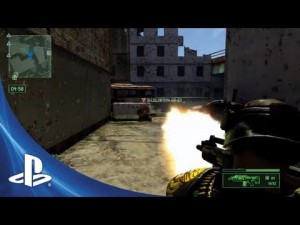 Think about it. In shooter games, it’s not uncommon to kill an enemy and then be able to pick up his weapon. So imagine if No Man’s Land introduced a random chance of a weapon drop when a player is killed (it would have to be limited so that it didn’t happen every single time, of course)? That weapon could be picked up and utilized by another player until he himself was killed. It creates an incentive for strategic gameplay — because the moment you die, you go right back to your default loadout until you can pick up another random drop — and it introduces premium weapons in the game environment itself to the player. The player gets used to them, wants to own them, and (a percentage) decides to purchase them. This is especially important as, currently, the game offers no hands-on exposure to premium commodities without first buying them; even the tutorial doesn’t teach you how to use them. This would also help spur sales of armor, as players would want to stay alive long enough to be able to use the dropped weapons they scavenge during play sessions. You don’t want to give the house away for free, but the first rule of marketing an experience-based commodity is to give the consumer a taste of it (or, barring that, at least put them in the picture of using it).
Think about it. In shooter games, it’s not uncommon to kill an enemy and then be able to pick up his weapon. So imagine if No Man’s Land introduced a random chance of a weapon drop when a player is killed (it would have to be limited so that it didn’t happen every single time, of course)? That weapon could be picked up and utilized by another player until he himself was killed. It creates an incentive for strategic gameplay — because the moment you die, you go right back to your default loadout until you can pick up another random drop — and it introduces premium weapons in the game environment itself to the player. The player gets used to them, wants to own them, and (a percentage) decides to purchase them. This is especially important as, currently, the game offers no hands-on exposure to premium commodities without first buying them; even the tutorial doesn’t teach you how to use them. This would also help spur sales of armor, as players would want to stay alive long enough to be able to use the dropped weapons they scavenge during play sessions. You don’t want to give the house away for free, but the first rule of marketing an experience-based commodity is to give the consumer a taste of it (or, barring that, at least put them in the picture of using it).
Now, hey — VEEMEE could be making piles of money off of No Man’s Land just the way it is, and I genuinely want to see the game do well because I personally enjoy playing it and I don’t want to see it turn into a ghost town. But I genuinely believe that this one modification would be worth the cost to implement: it would effectively silence most of the game’s critics, provide an in-world method of allowing users to enjoy premium gear on a temporary basis, and create an incentive to actually purchase upgrades. Right now, the only exposure default players have to premium gear is on the receiving end — getting killed at a faster rate, and having to work harder to score a kill in return. Which is fine, except it may be possible to increase revenue by giving limited exposure to premium gear for the player to actually enjoy themselves. Once someone scores a kill with a machine gun — and then gets killed and has to go back to the pistol — it creates a very strong buying motivation to buy not only the gun, but enough armor to stay alive long enough to use it.
Like I said: I’m not a game designer. VEEMEE might’ve already thought of this and discarded it for some reason. I’m just a consumer who’s spent the last decade in resort development, obsessing over behavioral economics. But I do believe, much as I personally enjoy the game the way it is, that introducing temporary power-ups in the game itself — or, at the very least, a more comprehensive tutorial experience which entices the player to purchase what they just experienced — will not imbalance the game and will in fact lead to increased revenue and long-term user satisfaction.


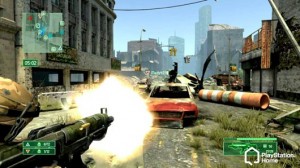
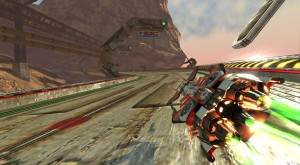
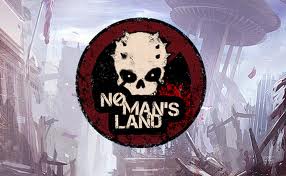
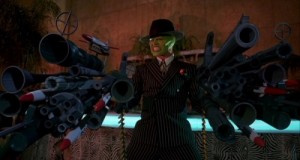

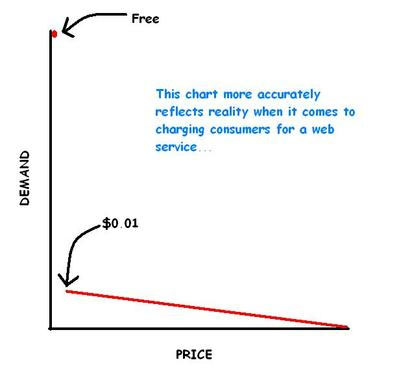
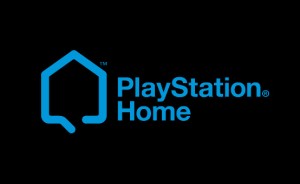
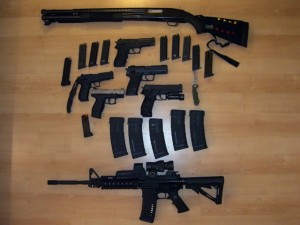
 LinkedIn
LinkedIn Twitter
Twitter
Couldn’t agree more, but in all honesty here if you even just spend TOPS $13, you can be on par with the (heck I’ll say it) Loonies who spent $50. So personally I think people need to chill. By the way correct me if I’m wrong, but isn’t that blinged out skullotor meets the LOD a heavy armor which slows you down an insane amount?
A more-comprehensive tutorial would be a win for players like me — players who suck at shooters, and are pretty sure they don’t enjoy them, but are still willing to give them a chance if the experience is not too painful.
But dying every few seconds is not enjoyable; we also need to experience the pleasure of success. Even if that success is gained against an AI opponent. A more complex tutorial, which would function as a full single-player version of the game, would give us that. And, as you stated, a more advanced tutorial would let us test-drive the premium gear — win in several dimensions.
I would suggest making the a full single-player version of “No Man’s Land” available for a one-time fee — which is then deducted from the cost of any premium weapons you buy for the multi-player game. A paid test-drive, in other words, which pays for itself if you continue. I think that would work.
You had me and then lost me, Seal. Yes, an expanded tutorial that explains what the guns do and gives users a chance to experience them is a solid idea. Norse’s random drop idea is cheaper to implement, but it assumes that players will stick around long enough to discover the random drop function. My bet is that a lot of them won’t, which makes the expanded tutorial the better idea. Let people see that they don’t have to get killed every time they spawn if they have some good guns. Let them train with them. Then you’ll see some sales.
At least you would if the central concept of the game wasn’t flawed. As I’ve noted previously, gamers need a goal, and blasting away at random strangers in pursuit of a spot on the leaderboard simply doesn’t have enough cache to generate mass appeal. We want trophies. We want rewards. Without those things, you’re left with a considerable investment of time to learn the mechanics of a complex game and nothing to show for your achievement.
There’s a very simple truism in online marketing: The competition is just a click away. The same is true for Home. If the player doesn’t like a particular game, there’s another one waiting on the Navigator, and if nothing in Home looks appealing, there’s a pile of disc-based games sitting next to the console, and hundreds of games to buy in the PS Store.
This puts Home games in a difficult position. Either the gameplay needs to be so incredibly good that someone genuinely wants to play, or there has to be some point to investing the time. Novus Prime and the Sodium games hit it on the fun factor. Granzella’s fossil hunting, which is barely a game, succeeds because it delivers so many rewards, with the ultimate goal of completing a museum.
Where No Man’s Land breaks the mold, more than in its lack of free items, is in its complexity. This is a game that is far more complicated than a quick taste will reveal, and the full range of the experience can only be achieved through purchases. If you’re going to separate a large number of players from their cash, you need to give the free player some sense of progress without the add-ons, or dazzle them with some hard-to-achieve reward that is highly coveted. These are the formulas that work, not just to sell product but to provide the level of engagement needed to make a complex freemium game a long-term success.
Freemium is a model that could easily rewrite the fortunes of game companies, if they did it correctly. Imagine a free-to-play Pokemon game with 100 unlockable characters. You get one for free when you start, but it costs $1 to own every Pokemon that you capture. The whales who want to own every character now have to pay $99 to complete the game, while more casual players might invest $20 to build a full stable of fighters. What was a retail item with a price tag of $40 now has a potentially higher per-customer margin, and in-game store distribution eliminates the resale market. (Seriously, Nintendo, drop the Miiverse and start building this now.)
The biggest benefit of freemium is that it lets players try before they buy, which overcomes the reluctance to shell out $60 for a title that may or may not suck in epic ways. With some design thought, the monetization opportunities can be structured to build engagement and the desire to buy more.
I agree with HIW on this one. Objectives and rewards would make No Man’s Land a more worthwhile undertaking. Maybe. I tried the game twice during its first week of release and haven’t returned. Just not my thing, even if it had rewards. Probably even if was free. I received complimentary all-access passes to Slap Happy Sam and Conspiracy last year. I played SHS once and hated it. I made it through the first few levels of Conspiracy before losing interest. Just saying that No Man’s Land’s success or lack thereof could be completely unrelated to the business model.
The more significant point is that Home games are different from standalone games in one massive way. Home is not based on the games themselves. In my opinion, more Home users are concerned with collecting stuff. Be it personal spaces, clothing, free rewards or winnable trophies from freemiun games…Homies like to have stuff and show off their stuff. Ornaments for apartments or avatar items are the symbols of success in Home. Leaderboards may work fine to showcase one’s abilities in many games but they’re not the priority in Home. That’s why the average Home user would shell out hundreds of dollars for personal spaces and clothing but not $10 for No Man’s Land. Many people on Home will play games that they do not like because they want the rewards. Most people will not trudge through a game to earn a space on the leaderboard unless they actually like playing the game. How many people play a Home game until winning the top prize, never to play it again? Do you think I’ve ever considered playing Orb Runner again since I earned the Champion Apartment? Not a chance.
Clear objectives or missions in No Man’s Land could possibly make the reward issue a moot point. Alas, Veemee missed the boat on that one too.
Regarding the comment that “no Home game is worth $50″, I would tend to agree with that opinion. In fact, I’ve probably said it myself at one time or another. It’s not that I believe a Home game can’t be worth $50. I’ve just yet to see one that is. I played Salt Shooter and Project Velocity endlessly for months with upgrades and boosters galore. I know that I never spent $50 combined. Maybe a Home game will be worthy of such a price tag one day but not yet. I still think that a Home game is more likely to peel $50 off of users in microtransactions than an up-front cost. That’s just the way that Home users are conditioned to spend their money.
I think the random drop is a pretty good idea. I haven’t played too much of No Man’s Land because… well.. there’s other games I’d rather spend my time on TBH. Without a story or SOME goal that is being accomplished, I just lose interest. Being a “WINNAR” just isn’t important enough for me to invest my time in.
I would like it if we chose a faction and fought against opposing factions for control over “zones”. And my mind just went off on a “what if” tangent that would make No Man’s Land an entirely different game so I won’t share. lol
Hey NorseGamer, would it be possible for you to examine and do an article on the Peakvox Ninja game in Japan Home? It’s amazing and competitive. They have great rewards for leveling up, which create an incentive to keep playing. The catch is you have a stamina bar that drains after every game session, and refills 1 point for every minute you don’t play. Having an empty stamina bar means you can’t run, double jump, or dodge roll while you play since your ninja/avatar is exhausted, but you can continue playing if you don’t mind getting owned by all the players with healthy stamina.
So for people who enjoy the game and want to keep playing, they can purchase various scrolls that restore their stamina and grant other gameplay enhancements. They also sell power weapons, armor, and other things that give you unique abilities and advantages while playing. Most recently they added ingame currency that can be used to buy clothing rewards for your avatar and ingame weapons like a bazooka and sword (originally sold in the store for yen). My friends and I play it often, so if you need more details you can PSN message me (McJorneil is my screen name).
I’d love to examine Peakvox Ninja, but I’m at something of a disadvantage: I don’t have accounts for other regions. I know I probably should — a significant portion of our audience comes from Europe — but it’s one of those things I’ve resisted doing.
That said, I’d love to read a review and business analysis of the game. If you’re up for writing a spec submission, McJorneil, we’d be interested to read it.
No Mans Land isn’t my type of game and never will be, shooters as a rule aren’t my thing. I doubt I would play it much unless there was a goal or reward attached to it, and even then it would be low on my list of to-do’s. I am waiting for the MiniBots and Mercia to come out, those are more my style and I hope that Mercia has some rewards attached to it to make it interesting to everyone, but knowing Lockwood I am sure it does as we already know that MiniBots does.
I think that I agree, No Mans Land needs to be rethought, or it won’t get far here.
thats a lot of unique visitors 200,000 in first fortnight seeing as aurora took a year to get a million unique visitors over 4 regions, I think its the wrong game for home, its hampered by homes limitations and veemee then made it worse by forgetting what makes a home game successful and what makes a shooter successful, theres no reason to play it, no aim to it, no rewards, no MOABS its one avatar shooting another, then the more you pay the easier it is to win, but that has created other issues with joining games as everyone wants to be on the same team as the upgraded players so joining games is a mission as well, its just so wrong for home and so poor all round
The numbers were complete fabrication, used to illustrate a point. I dunno if it’s the wrong game for Home but there is an issue with the implementation.
Precisely; as the article states, the numbers are there purely to demonstrate the importance of whales to a freemium commerce structure, and I have no idea if they’re anywhere close to being accurate (nor is it ultimately important for them to be).
No Man’s Land raises an interesting question: whether or not Home games are more about the game itself, or the meta-game of achieving something and being rewarded with various tchotchke for the effort. I freely admit I’m hooked on this game — it’s chess with guns, and it’s got a surprising amount of depth to its strategy — but I wonder if “fixing” the unbalanced nature of the game would even be sufficient for the Home audience.
I should of said I did read that about the figures, should of made my point more clearly, fabricating figures dont make a point and illustrate nothing because whatever figures we put in there would be weighted towards what outcome we wanted, and as for the wrong game for home its more about the limitations of home than the game itself, we will never get a decent shooter on home because of homes limitations, so why veemee thought they could make a shooter that can stand out on its own merits is beyond me.
Considering the well-documented nature of power-law distribution economics (“whale economies”) in social games, Gary, I would hardly consider the hypothetical example used in this article to be egregiously slanted to establish a point that isn’t already well established elsewhere. Thanks.
I’d say Home can definitely support shooter games; SodiumOne, which is generally considered to be one of Home’s most successful games, is a third-person shooter — it just uses mechs instead of people. Even if we limit the argument to multiplayer PvP games, the multiplayer version of MiniBots Battlebox is almost certainly going to be a hit, and that’s a third-person shooter, just like No Man’s Land.
Granted, not every shooter game in Home works. Bootleggers ’29 is a ghost town, for instance. And I will be fascinated to see what VEEMEE has up its sleeve to drive traffic to No Man’s Land long-term.
The key with a Home shooter game is that it has to offer something which can’t be found in disc-based AAA-games. No Man’s Land faces a major challenge here, because it’s going for realism over whimsy, and that’s where your point about the limitations of Home start to come into play. Although the cover-based mechanics of the game are ironically more realistic than most shooter games, it’s a matter of what the gaming audience is used to experiencing. By making a game whimsical or unrealistic in some fashion, it deviates from that template and ironically makes the audience more receptive to a new experience.
whale economics are fine but using fabricated figures as example is what I was saying, can make the example look weighted towards one idea, it would be same problem if I wrote same figures down it would be weighted towards my idea, Its a new experience for home only users, its a poor shooter to us that play games outside of home. Home developers need to think what would make us play games on home versus playing games, before someone shouts the cost of a full game versus a home, I can buy several good shooters from the bargin bins that cost less than playing No Mans Land. Give Veemee 10 out of 10 for trying to make chicken soup out of chicken crap. Veemee could double they footfall there by putting rewards in, but probably dont want that to be the only reason why people play it, but they havent given anyone any other reason to play it though. You play it because you enjoy it. but unfortunately home games are rarely a success if they rely on people just enjoying them. because theres too much competition out there in the just enjoying yourself market
Regarding using examples which are clearly stated to be hypothetical: I’m done defending a point that in truth needs no defense. Move on.
I do agree with you that a Home game needs to do more than just try to compete with disc-based titles, because that’s a losing proposition; the more money is sunk into a game, the higher the buy-in has to be (either all at once or over time) to generate sufficient ROIC. Hence why I suspect there’s less resistance to cheap, limited-use commodities (Midway, Casino), because the consumer rarely bothers to add up what they’ve cumulatively spent. Cutthroats could have been a smash hit with this formula, as it’s a game that actually plays to Home’s strengths, but the pricing structure was egregiously high. Should that change, I suspect the game would be more successful at long-term user retention.
Rewards, it seems, are the easiest method of stretching out a game’s longevity in Home. The reward itself rarely seems to be worth it — with the exception of truly fantastic rewards such as the Aurora Champion’s Apartment, or rewards which take considerable skill such as the Midway jackets — but it’s an excuse to keep playing. And if it takes so little to motivate the Home audience, then it is a trend that will continue.
Of course, it only takes a little to motivate the Home community.
How many people run around the Lockwood Showcase mindlessly for hours stomping eggs? The activity is hopelessly repetitive and gives me a headache after about 10 minutes. I gave up that one quickly. From what I’ve seen, the rewards aren’t even that great. But they’re free and people want them.
How much effort and expense would it have taken for Veemee to create some sort of rewards system for NML upon its release? You personally may not feel that rewards are an essential element of the game. Veemee, however, is trying to sell this game to the Home community at a premium price. Major blunder on their part.
Yeap. Without a goal to work towards, what are you doing it for? There are extremely few games that have a purely fun element, I’m talking the sugar syrup of gaming nectar. Something you’ll play over and over, so much for so long that you lost your day off by accident. But that’s gold dust. What’s the next best thing then? The carrot in front of the donkey’s nose, that’s what.
And that’s what keeps people going back to Aurora or Novus, hell, WoW is built on it, so’s every Final Fantasy game, many games are and all sell well. If you dole out little treats (especially for repetitive behaviour) every so often, they’ll keep playing. Or in the case if animals and treats, keep doing what their told.
Veemee took a risk, they asked the gamer to take interest with no incentive, and they charged while doing so. By doing this they’ll no doubt get a sturdy stable of gamers who enjoy NML, but they’ll always be watching nDreams and Lockwood drive their beards to their farms.
Hahahahah! Wow we need an edit button; driving BEARDS!? What the hell!?
*AHEM*
“drive their herds to their farms”